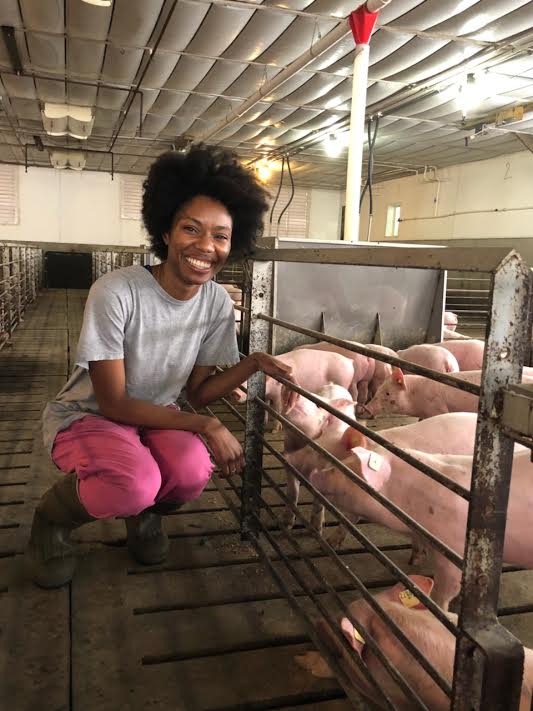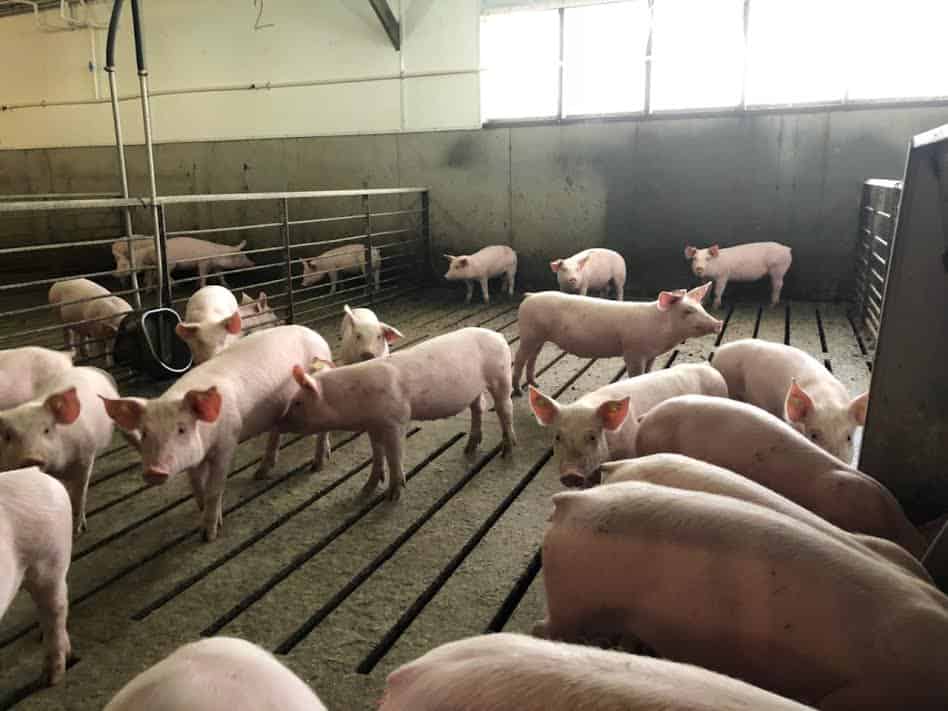This is a sponsored post on behalf of The Ohio Pork Council. All opinions and experiences are my own.
There’s so much to do before the “fun” part of farming. During the last part of our pig farm journey, I was just about to learn the long list of to-dos a farmer must take care of, before checking on the most important part of the process: the animals.
Did you miss the first part of our day at the farm? Click here: Morning on the Farm.
Picture this: I’m all showered in, new clothes on, comfy in sweats and a cool pair of socks, and I’m ready to see some cute little piggies. Then Rebecca Surber, the awesome woman I’d be mirroring for the morning, breaks the news to me. We have other tasks to do. This is the life of a farmer. Lots of simple but important items to take care of, each and everyday.
I’m the typical American. I know of farms, I know that most of the food I eat (if I eat well), comes from farms, but I have no idea how much work goes into growing and maintaining that food. On this crisp fall morning, I learned exactly what all of that hard and appreciated work entailed.
Before we set off for our day, Rebecca shared a long list of general tasks that she and her team handles. Want a peek at some of the items they take care of?
- climbing feed bins
- checking propane tanks
- general facility cleaning, including shower in/shower out areas
- power washing the whole barn
- receive and care for pigs of all sizes and cycles of life
- walking the pens daily
- checking the waterers
- administering routine and seasonal vaccines
- washing laundry, if needed
- check the air quality in the barn
- check room temperatures
After reviewing part of the list, I was immediately shocked, and excited to see what we would be doing that morning.
After we were showered, Rebecca instructed me to wash my hands in the office area. Yes, after taking my second shower of the day, I had to wash my hands. Again, I was so impressed with how much care they put into keeping the livestock safe and healthy.
After I washed my hands, Rebecca went through our to-do list for the day. We needed to check the temperature and air quality of the barn, make sure the water pressure was correct, and according to the paperwork, give one little piggy her medicine for the day. Did I mention all of the pigs at this particular barn were female? We visited 400 medium sized pigs at that particular barn, but I was able to view quite a few barns on our ride to and from the facility.
The last, and cutest, part of the tour was visiting with the pigs. One we were able to enter the pens, after donning the tallest rubber boots ever, I was able to see all of the space the pigs enjoyed. Each pen reminded me of a classroom; the kids were assigned to their room, with their “classmates” and had their favorite spots within their space. Rebecca shared with me that sometimes the pigs may jump from one pen to another, and the other pigs will immediately know that pig does not belong in their space. Their reaction is very similar to having a new kid in class, which is why they keep the same pigs together from their early days all the way until they reach the big stage, up to 22 weeks.
Rebecca climbed into each and every pen to say hello, have them trot around to check their movements and demeanor, make sure they had enough food in their troths, and And administer medication to one very special piggy that needed a little shot to help get her eating and feeling better again. Rebecca explained to me the different needs each stage of pigs need. The babies need extra special attention, and are usually manually fed for the first few weeks. The medium sized pigs that we visited that day were fed via a scheduled system that’s built into the facility. This is the same system that monitors the air and water. What caught me off guard was how happy and healthy the pigs looked. I’ve heard the horror stories and seen the biased documentaries about the state of American farming, so I did come into the farm hoping none of those things were true. These pigs were very healthy looking, sweet, and active. I could have stayed there for hours with them, and I felt very good in their space, which means they must feel the same way.
By 11am, we were done with our tasks, and I had to stop and think how much we tackled in less than 3 hours. I also mentioned to Rebecca that my homeschooled kids would absolutely love to see how life works at the farm, and she reminded me that they do Facebook Live sessions with classes that want to learn more about farming. How cool is that? We plan to sign up for a session during our next semester, to learn more about farming.
As I drove home, I had to think of everything I learned in mere hours, and how Rebecca and her family do this every day. Every day, they provide for families near and far. When I shop at our grocery stores here in Ohio, I know that the pork products I purchase come from these nearby farms. That’s a big deal, friends. It’s so important to know where our food comes from, and now I can pinpoint exactly where. Thank you, Surber family, for allowing me to have this amazing experience.
To learn more about Ohio pork farmers, please visit Ohio Pork.














Is your family no longer pork-free?
We haven’t been for a few years :). We’ve been slowly learning about pork, and trying new recipes featuring pork.
i USED TO RAISE hogs had about 200 head outside and would bring them in when it was getting close to their having thier babies…. I built each and every one of my farrowing crates and I installed automatic waters. Each sow had a name and Listed them in a book along with their history of type f feed, any medication and their babies.. Each pig had an ear tag with it’s number on it…. I have sold my business to another farmer here in Ohio so it continues on.